|
Flying High with the Air
Mobility Command
by Bob
Brooke
Nestled in central
Delaware on the grounds of Dover Air Force Base is a fascinating
museum dedicated to the Air Mobility Command. The Command's mission
is to provide rapid, global mobility and sustainability for
America's armed forces. The command also plays a crucial role in
providing humanitarian support at home and around the world through
airlifts in times of need.
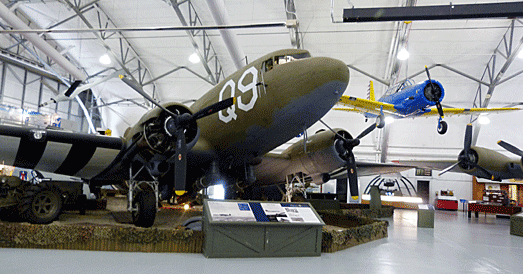
But a visit gives visitors a somewhat hands-on experience. Visitors can
climb aboard planes ranging from World War II propeller aircraft to
current four-engine jet transports. Try out the flight simulators, enjoy
free guided tours and much more at the Air Mobility Command Museum.
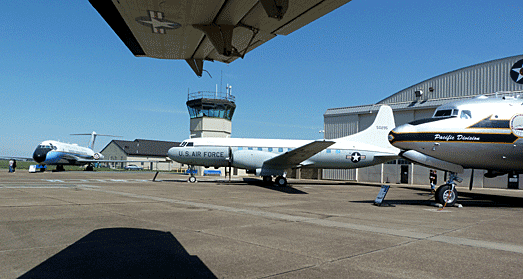
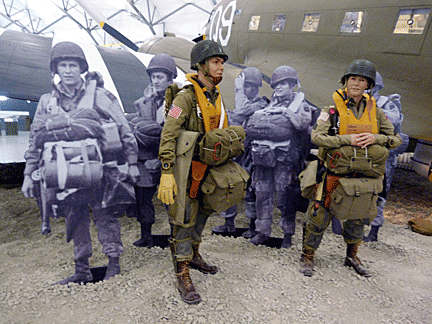 Established
in 1986 in historic Hangar 1301, a World War II-era site for the
top-secret development of rocket weaponry, the facility is now listed on
the National Register of Historic Places. It contains the largest and
most complete collection of fully restored U.S. military cargo and
tanker aircraft in the Eastern United States. The museum’s mission is to
collect, preserve and exhibit the artifacts and human stories that deal
with the development and employment of military airlift and air
refueling in the US Air Force, as well as to illustrate the history of
Dover Air Force Base. Established
in 1986 in historic Hangar 1301, a World War II-era site for the
top-secret development of rocket weaponry, the facility is now listed on
the National Register of Historic Places. It contains the largest and
most complete collection of fully restored U.S. military cargo and
tanker aircraft in the Eastern United States. The museum’s mission is to
collect, preserve and exhibit the artifacts and human stories that deal
with the development and employment of military airlift and air
refueling in the US Air Force, as well as to illustrate the history of
Dover Air Force Base.
Originally built as a civilian airport modified for military use in
response to the outbreak of hostilities in Europe and Asia between 1939
and 1940, Dover Municipal Airfield, leased by the War Department, became
a base for anti-submarine operations, fighter pilot training, and aerial
rocket testing and development for the length of the World War II.
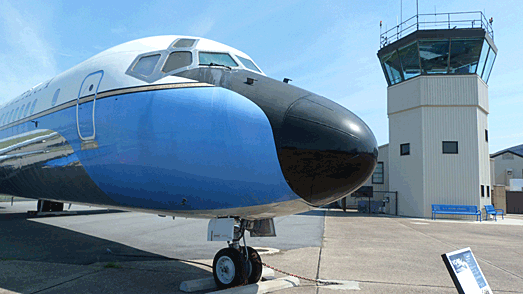
In September 1946, Dover Army Airfield became inactive. Following the
creation of the U.S. Air Force, the Airfield became Dover Air Force Base
on January 13, 1948. But it didn’t gain permanent status until December
22, 1953.
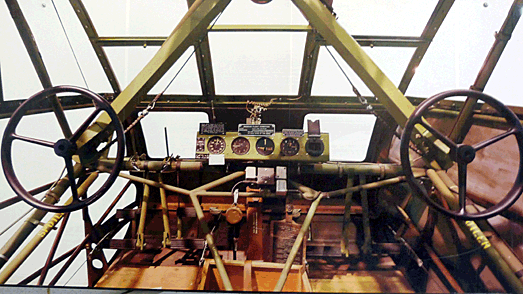
During this time, the Air Force was involved in the Vietnam War, Cold
War, Desert Shield and Desert Storm, as well as humanitarian efforts
including Operation Provide Comfort and the relief of former USSR
satellite nations following its dissolution. Many of the aircraft in the
museum's collection originated at this time.
Inside the Hangar
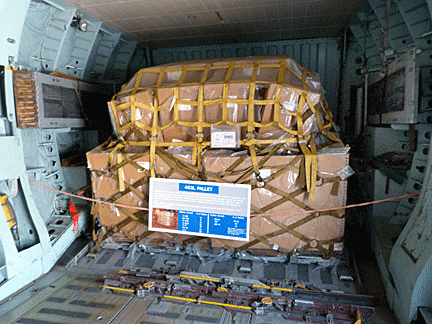 The
concept for the museum evolved from the Air Force Reserve restoration of
the B-17G bomber "Shoo Shoo Baby" in 1978. This aircraft became the
first of many to be restored for display at the museum. One of the most
charismatic planes in the collection is the B-17, America’s most famous
heavy bomber during WWII. Over 12,000 were produced for combat. The
B-17G Flying Fortress completed a long-term refurbishment. One of the
most well known bombers of all time, the B-17 Flying Fortress became
famous for the long daylight bombing raids over German industrial
targets in WWII. The
concept for the museum evolved from the Air Force Reserve restoration of
the B-17G bomber "Shoo Shoo Baby" in 1978. This aircraft became the
first of many to be restored for display at the museum. One of the most
charismatic planes in the collection is the B-17, America’s most famous
heavy bomber during WWII. Over 12,000 were produced for combat. The
B-17G Flying Fortress completed a long-term refurbishment. One of the
most well known bombers of all time, the B-17 Flying Fortress became
famous for the long daylight bombing raids over German industrial
targets in WWII.
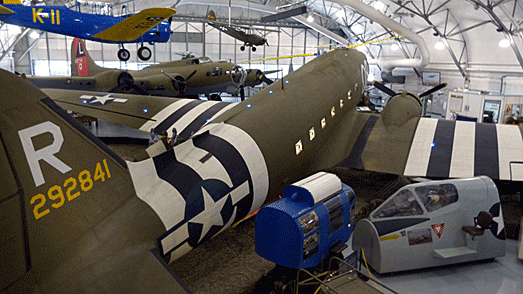
The beautifully restored B-17 sits proudly next to a combat veteran
C-47, and Air Force Two, the official plane of many U.S. Vice
Presidents. But it took until 1986 for the museum, itself, to be
launched.
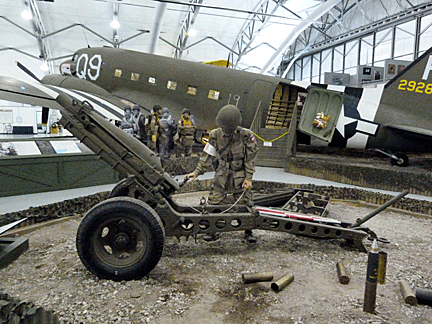 At
the same time, the C-47A Skytrain, nicknamed “Gooney Bird,” was adapted
from the DC-3 commercial airliner which first appeared in 1936. It
carried personnel and cargo, and in a combat role, towed troop-carrying
gliders and dropped paratroops into enemy territory. Other museums
rejected it as "beyond salvage." It took part in troop transport during
Operation Neptune for D-Day and then ferried supplies in the Berlin
Airlift after the war. At
the same time, the C-47A Skytrain, nicknamed “Gooney Bird,” was adapted
from the DC-3 commercial airliner which first appeared in 1936. It
carried personnel and cargo, and in a combat role, towed troop-carrying
gliders and dropped paratroops into enemy territory. Other museums
rejected it as "beyond salvage." It took part in troop transport during
Operation Neptune for D-Day and then ferried supplies in the Berlin
Airlift after the war.
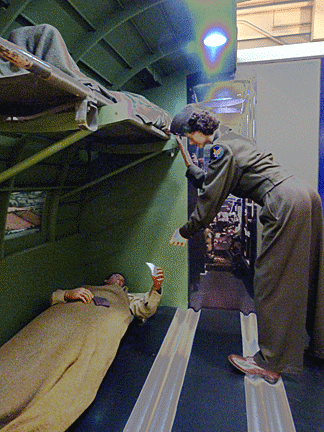 During
the Korean War, the C-47A hauled supplies, dropped paratroops, evacuated
wounded, and dropped flares for night-bombing attacks. In Vietnam, the
C-47 served again as a transport but it was also used for a variety of
other missions which included flying ground attack, reconnaissance, and
psychological warfare missions. During
the Korean War, the C-47A hauled supplies, dropped paratroops, evacuated
wounded, and dropped flares for night-bombing attacks. In Vietnam, the
C-47 served again as a transport but it was also used for a variety of
other missions which included flying ground attack, reconnaissance, and
psychological warfare missions.
The U.S. Air Force officially recognized the Dover Air Force Base
Historical Center in 1995 which had been moved from three hangars in the
main area of the base to its present location in Hangar 1301 in June
1996. In February 1997, the Air Force changed the Center’s name to the
Air Mobility Command Museum in February 1997. The Museum encompasses
over 20,000 square feet of display space, including an aircraft exhibit
gallery plus 1,300 square feet of exhibit rooms.
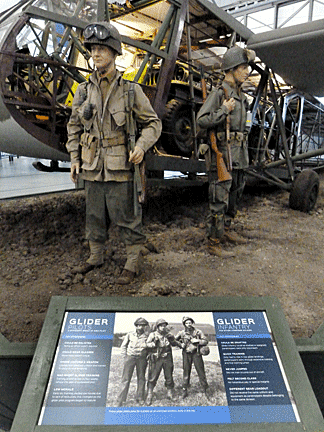 The
surrounding 100,000 square feet of outdoor tarmac allows visitors to
inspect the remaining aircraft in the collection. The
surrounding 100,000 square feet of outdoor tarmac allows visitors to
inspect the remaining aircraft in the collection.
Inside the hangar, visitors can view a variety of exhibits illustrating
some of the many operations conducted by the Air Mobility Command. The
CG-4A glider was restored using original blueprints. The right wing
wasn’t installed due to its considerable length. The left wing was
restored to half of its original length.
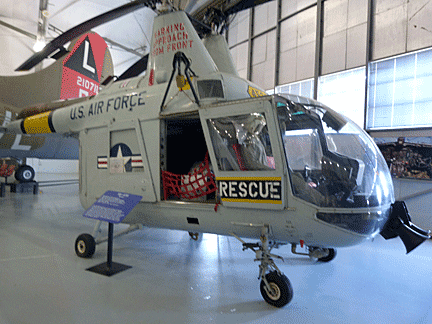 The
skin on the left side of the fuselage and parts of the wing structure
were left exposed so you can see the intricate woodwork that went into
creating the CG-4A glider. The
skin on the left side of the fuselage and parts of the wing structure
were left exposed so you can see the intricate woodwork that went into
creating the CG-4A glider.
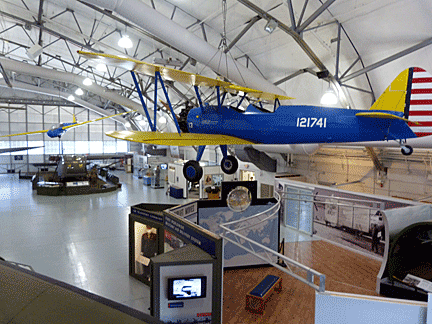 Another
of the many exhibits is the USAF Huskie Rescue Helicopter which was
assigned to Dover Air Force Base from 1959 to 1962. As part of this
exhibit is a display illustrating the transport of wounded soldiers. Another
of the many exhibits is the USAF Huskie Rescue Helicopter which was
assigned to Dover Air Force Base from 1959 to 1962. As part of this
exhibit is a display illustrating the transport of wounded soldiers.
Suspended overhead is the BT-13 Valiant, nicknamed the “Vibrator,” a
colorful bi-plane trainer used by the U.S.Army Air Force during World
War II. It represented the second of the three stages of pilot
training—primary, basic and advanced. Compared with the primary trainers
in use at the time, it was considerably more complex. The BT-13 not only
had a more powerful engine, it was also faster and heavier. In addition,
it required the student pilot to use two-way radio communications with
the ground, operate landing flaps and a two-position variable pitch
propeller.
Some Super Aircraft to Explore
Out on the Tarmac
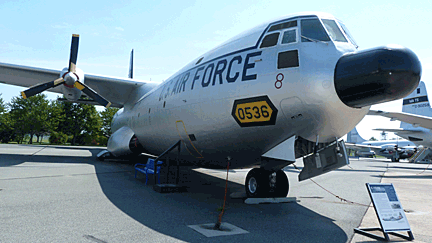 As
visitors step through the door from the hangar, they step onto the
tarmac where a variety of aircraft wait their exploration. Some of the
aircraft are so huge it’s seems almost impossible for them to get off
the ground. More than 30 aircraft ranging from an open cockpit bi-plane
to huge modern four-engine jet transports stand ready, many open to
interior visits. As
visitors step through the door from the hangar, they step onto the
tarmac where a variety of aircraft wait their exploration. Some of the
aircraft are so huge it’s seems almost impossible for them to get off
the ground. More than 30 aircraft ranging from an open cockpit bi-plane
to huge modern four-engine jet transports stand ready, many open to
interior visits.
Among all the planes
displayed on the tarmac, the C-141A Starlifter is the most impressive.
It was the first ever of its type built and had its maiden flight on
December 17, 1963, the 60th anniversary of the Wright Brothers first
flight.
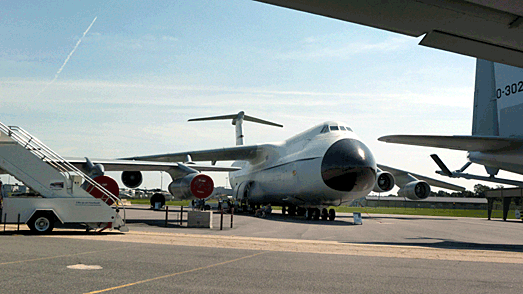
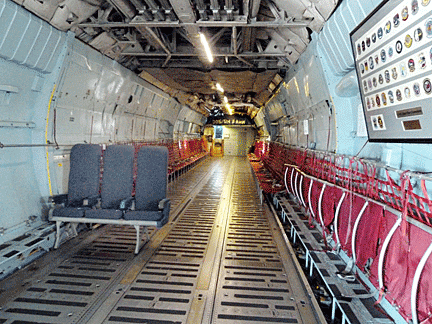 This
C-141A Starlifter spent its entire career as a test aircraft in numerous
programs. It’s one of only two remaining “A” models and is the only
known four engine jet used to tow a glider. The last program this A
model carried out, known as Eclipse, was to test a new tension rope from
NASA while towing a QF-106 in air. This
C-141A Starlifter spent its entire career as a test aircraft in numerous
programs. It’s one of only two remaining “A” models and is the only
known four engine jet used to tow a glider. The last program this A
model carried out, known as Eclipse, was to test a new tension rope from
NASA while towing a QF-106 in air.
From the 1970s to the 2000s, the Starlifter was the workhorse of the Air
Mobility Command. It took care of a varietyy of airlift operations
through its ability to airlift troops over long distances, delivering
them and their equipment either by air, land or airdrop, as well as
resupplying forces and transporting the sick and wounded from the
hostile area to advanced medical facilities.
Open Wednesday through Sunday - 9 A.M. to 4 P.M.
Admission and parking are free.
<
Back to More Antiques to View
Next Article > |
